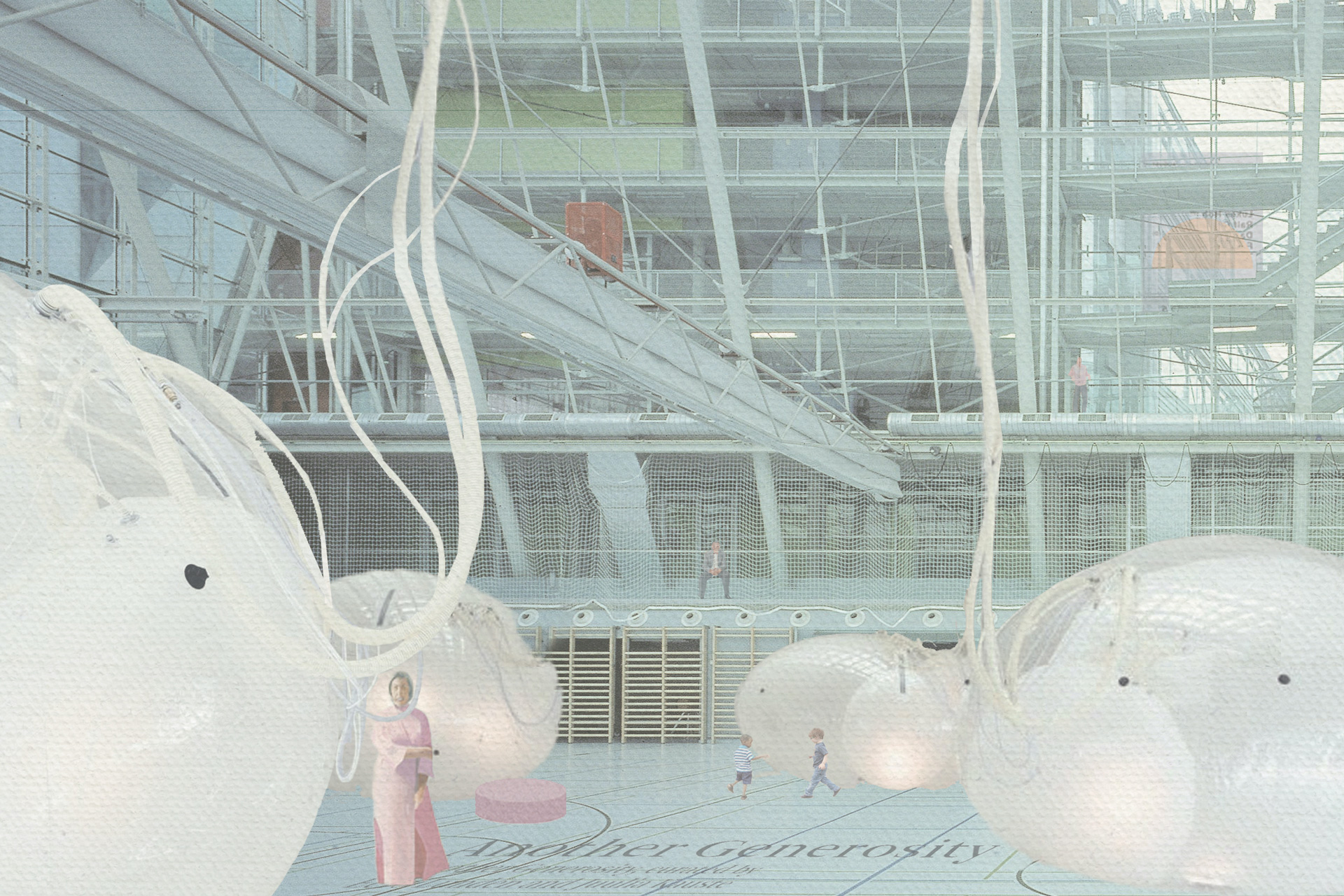10/2021
The school at Kinkplatz – technical ruin or monument?
Is the school building worth protecting? What after-effects placing it under protection would have on the future use and handling of the building?
Sophie Stockhammer
Diploma in Architecture
E251-2 – Denkmalpflege und Bauen im Bestand
Supervisor: Nott Caviezel
The school at Kinkplatz was built in 1995 by the Austrian architect Helmut Richter as a secondary school in Vienna. It has been considered the most controversial and polarising project of the Vienna School Building Programme 2000 ever since. After 22 years, the school was closed in 2017 due to several defects and has been empty since.
This diploma thesis will focus on the school‘s history from the planning process to the current discourse about its potential demolition or preservation. Additionally, the connection between architecture and technology created by Helmut Richter will be discussed. As an architect, Helmut Richter shaped not only teaching at the Vienna University of Technology but also Austrian architecture in general. His technical, innovative designs always explored the limits of what was possible. The school is an example of his international attitude and pursuit for a high-tech architecture that was not very well received in Austria.
Based on an architectural-historical classification of the school in the history of school architecture in Austria, the requirements, the various teaching methods and the associated building typologies of school construction in Austria from the 1960s and 70s up to the Vienna School Building Programme 2000 in the 1990s will be addressed. In the course of an evaluation of the building in accordance with monument preservation, both the preservation concepts according to Alois Riegl and modern values will be discussed. These concepts will then be considered in relation to the school itself. The aim is to determine whether the building is worth protecting and what after-effects placing it under protection would have on the future use and handling of the building. An essential part of the work is creating a room book, which will document the school‘s current state. Based on the first part of the work‘s findings, this thesis will develop a monument preservation concept for preserving the school. Additionally, with the help of a usage concept, measures for the existing building stock and handling of the existing structures are defined.
The school at Kinkplatz was built in 1995 by the Austrian architect Helmut Richter as a secondary school in Vienna. It has been considered the most controversial and polarising project of the Vienna School Building Programme 2000 ever since. After 22 years, the school was closed in 2017 due to several defects and has been empty since.
This diploma thesis will focus on the school‘s history from the planning process to the current discourse about its potential demolition or preservation. Additionally, the connection between architecture and technology created by Helmut Richter will be discussed. As an architect, Helmut Richter shaped not only teaching at the Vienna University of Technology but also Austrian architecture in general. His technical, innovative designs always explored the limits of what was possible. The school is an example of his international attitude and pursuit for a high-tech architecture that was not very well received in Austria.
Based on an architectural-historical classification of the school in the history of school architecture in Austria, the requirements, the various teaching methods and the associated building typologies of school construction in Austria from the 1960s and 70s up to the Vienna School Building Programme 2000 in the 1990s will be addressed. In the course of an evaluation of the building in accordance with monument preservation, both the preservation concepts according to Alois Riegl and modern values will be discussed. These concepts will then be considered in relation to the school itself. The aim is to determine whether the building is worth protecting and what after-effects placing it under protection would have on the future use and handling of the building. An essential part of the work is creating a room book, which will document the school‘s current state. Based on the first part of the work‘s findings, this thesis will develop a monument preservation concept for preserving the school. Additionally, with the help of a usage concept, measures for the existing building stock and handling of the existing structures are defined.
Diploma in Architecture
E251-2 – Denkmalpflege und Bauen im Bestand
Supervisor: Nott Caviezel
